Enhancement for a Sustainable Future - - The Texas Artificial Reef Program
Paul Hammerschmidt, Artificial Reef Program Director
One biological truism states that habitat diversity creates ecological diversity. You’ve also probably heard, “If you build it, they will come.” Texas Artificial Reef Program has been applying both these concepts for decades in creating new reefs.
Natural structure and hard bottom are rare in the Gulf of Mexico where the bottom is pretty much a vast featureless plain of mud and sand. Where structure does occur, natural or otherwise, it is like an oasis in a desert. Virtual gardens of sessile (permanently attached) invertebrates like barnacles, corals, sponges, clams, anemones, bryozoans and hydroids quickly attach to every available surface and in every nook and cranny. On the natural side, this biological richness can be seen in the Flower Garden Banks National Marine Sanctuary, a natural reef complex located about 100 miles from Galveston, Texas, and 400 miles north of the nearest tropical coral reef. On the man-made side, the hundreds of petroleum platforms dotting the Gulf of Mexico also support a vast array of natural reef-like communities, functioning as hard substrate upon which animals and plants can settle.
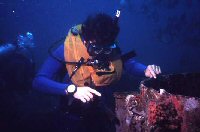
Living within the shelter of these encrusting animals, a host of reef fish species like beautiful angelfish and damselfish, as well as snappers and groupers feed and breed. Further up the food chain, larger predatory fish like mackerel, shark and billfish can be found seeking shelter and the occasional lunch. The final link in this natural chain is us; human beings who have learned that where there is structure, there will be fish to catch.
However, for that vast muddy featureless bottom, TPWD has applied the build-it-and-they- will-come philosophy. Those who arrive are not only the reef community animals from barnacles to mackerels, but also the anglers and divers who want greater fishing and diving opportunities in the Gulf.
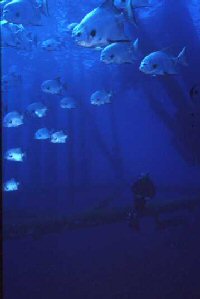
To this end, Texas has been involved in artificial reef development for nearly 50 years. Tires, automobiles and construction rubble have all been used in reef building at one time, but these materials had little long-term success because they were easily broken up and moved by storms. The first highly successful artificial reef development occurred during the mid-1970s when 12 obsolete World War II Liberty Ships were sunk at five different sites in the Gulf; sites that are still productive today. In the middle 1980’s, national artificial reef plans were made and guidelines set to encourage development of the best and most effective artificial reefs. In 1989, the Texas Artificial Reef Act, to promote and enhance Texas’ artificial reef potential, was passed.
During this same period, the slow-down in oil and gas activity in the Gulf resulted in an increase in the number of rigs being scrapped. Rigs make ideal artificial reefs. They are environmentally safe, constructed of highly durable and stable material that withstands displacement or breakup, and already support a thriving reef ecosystem and every rig taken to shore was a loss of habitat, and fishing potential in the Gulf. So was born “Rigs-to-Reefs. ” Government and the oil and gas industry reached an agreement to recycle obsolete petroleum platforms into permanent artificial reefs rather than being taken ashore as scrap. This became the heart of the Texas Artificial Reef Program.
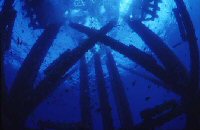
Since 1990, cooperating oil and gas companies have donated more than 64 obsolete petroleum platforms and contributed one half of the savings realized by reefing their rigs to the Artificial Reef Fund. These dedicated funds allow the Program to be relatively self-sufficient and finance research, administration, maintenance, liability coverage and construction of new artificial reefs.
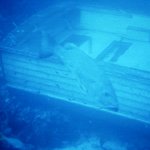
To diversify these habitats, TPWD has placed many other types of materials at permitted sites throughout the Gulf of Mexico, such as concrete fabricated reef balls, large quarry rocks, concrete culverts, a 55-ton U.S. Navy surplus steel buoy, several barges, a T-2 steel tanker, and one 44-ft steel tugboat.
The Texas Artificial Reef Program has had tremendous success creating sustainable habitat and developing a new opportunity for anglers and divers as well. Researchers have observed that over 52,000 anglers and 6,000 divers on charter boats alone visit TPWD artificial reef sites every year, and the demand for more reef sites continues to grow.
So where do we go from here? The Rigs-to-Reefs part of the program will continue as long as there are petroleum platforms in the Gulf. We are actively pursuing acquisition of obsolete ships from the U.S. Navy and the Maritime Administration for use as artificial reefs and backing a new initiative to develop artificial reefs closer to shore for easier access. It just takes time patience and funds.
What’s in it for everyone? More hard-bottom habitat that encourages the growth and development of more reef communities which contain and support greater populations of fish that, in turn, offer greater diving and fishing opportunities to us, our children and grandchildren.
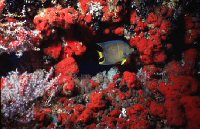
Enhancement creates habitat diversity, creates ecological diversity, creates a sustainable future: ….creates fun.
© Copyright Texas Parks and Wildlife Department. No part of this work may be copied, reproduced, or translated in any form or medium without the prior written consent of Texas Parks Wildlife Department except where specifically noted. If you want to use these articles, see Site Policies